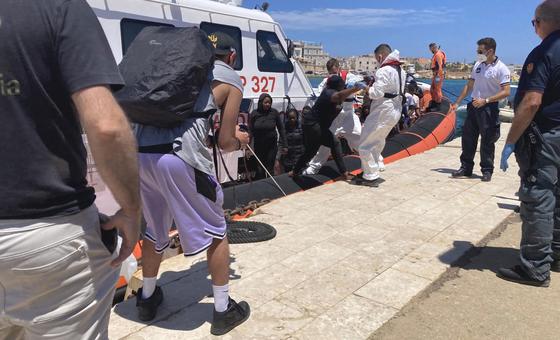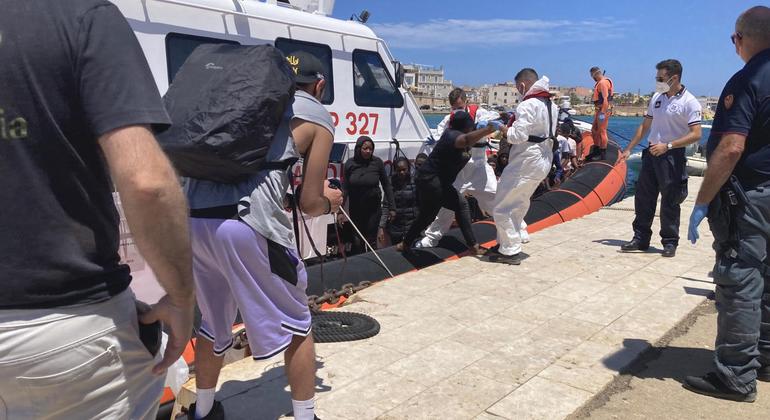
The figure is equivalent to about 11 children dying each week, “far beyond what we hear in news headlines,” Vera Knaus, the agency’s Global Lead on Migration and Displacement, told journalists attending the biweekly UN humanitarian briefing in Geneva.
“We cannot continue to ignore what is happening – stand by silently when nearly 300 children – an entire plane full of children – are dying in the waters between Europe and Africa in just six months,” she said.
Preventable deaths
Conflict and climate change are forcing increasing numbers of children to embark on the dangerous sea journey from North Africa to Europe.
UNICEF estimated that 11,600 children have made the crossing during the first six months of the year – again nearly twice as many as in the same period in 2022.
However, the agency warned that the true number of child casualties is likely to be higher as many shipwrecks in the Central Mediterranean leave no survivors or go unrecorded.
Ms. Knaus said it appears the world is “willfully ignoring what is happening”, given the numbers and the silence surrounding many of these preventable deaths.
‘Drowning in the world’s inaction’
“Children are dying not just in front of our eyes; they are dying while we seem to keep our eyes closed. Hundreds of girls and boys are drowning in the world’s inaction,” she said, noting that the Central Mediterranean is among the deadliest migration routes for children.
UNICEF further estimated that many children are making the crossing without their parents or guardians, with girls travelling alone especially vulnerable to violence throughout the journey.
During the first three months of the year, 3,300 unaccompanied or separated children arrived in Europe via the Central Mediterranean Sea route, or more than 70 per cent of the total.
Strengthen child protection
In response to the escalating crisis, UNICEF is supporting countries in strengthening child protection, social protection and migration and asylum systems. Staff are also working with governments to provide support and inclusive services to all children, regardless of their legal status, or that of their parents.
“These deaths are preventable,” Ms. Knaus said. “They are as much driven by the complex emergencies, conflicts and climate risks that drive children from their homes as by the lack of political and practical action to do what it takes to enable safe access to asylum and to protect the rights and lives of children wherever they come from and whatever their mode of travel.”
Save lives at sea
Meanwhile, countries in the region, and the European Union (EU), must do more to protect vulnerable children at sea but also in countries of origin, transit and destination, she said.
She also stressed the need for safe, legal and accessible pathways for children to seek protection and reunite with their families, through expanding access to family reunification, refugee resettlement or other humanitarian visas.
Additionally, countries must step up coordination on search and rescue operations at sea and ensure prompt disembarkation to safe locations.
Ms. Knaus said the duty to rescue a boat in distress is a fundamental rule in international maritime law, and pushbacks at sea or land borders are violations of national, EU and international law.



